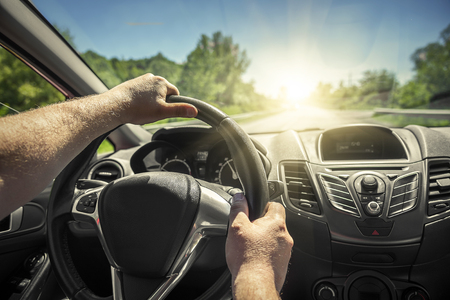1. Understanding Uninsured Motorist Coverage
Uninsured motorist (UM) coverage is a type of auto insurance that protects you if youre involved in an accident caused by a driver who doesnt have insurance. While car insurance is legally required in most states, some drivers still choose to drive without it. If one of these uninsured drivers hits you, UM coverage helps cover your medical expenses, lost wages, and other related costs.
What Is the Purpose of Uninsured Motorist Coverage?
The main purpose of uninsured motorist coverage is to protect you from financial loss if youre hit by an uninsured driver. Without this coverage, you might have to pay out of pocket for medical bills and other expenses, even if the accident wasn’t your fault. Having UM coverage gives you peace of mind, knowing that youre financially protected no matter who is on the road.
How Does Uninsured Motorist Coverage Protect You?
Uninsured motorist coverage provides financial support in various ways. Below is a breakdown of what it typically covers:
| Type of Coverage | What It Covers |
|---|---|
| Medical Expenses | Covers hospital bills, doctor visits, and rehabilitation costs. |
| Lost Wages | Provides compensation if youre unable to work due to injuries. |
| Pain and Suffering | Helps cover emotional distress and long-term pain caused by the accident. |
| Vehicle Damage (in some states) | Repairs or replaces your car if its damaged by an uninsured driver. |
Why Is Uninsured Motorist Coverage Important?
Even though car insurance is mandatory in most places, many drivers either don’t carry insurance or don’t have enough coverage to fully compensate you after an accident. Without UM coverage, you could be left with significant financial burdens. This type of insurance ensures that you’re not stuck paying for damages caused by someone elses negligence.
2. How Uninsured Motorist Coverage Works
Uninsured Motorist (UM) coverage is designed to protect you if youre in an accident caused by a driver who doesnt have insurance. This type of coverage helps pay for your medical expenses, lost wages, and other damages that the at-fault driver would have been responsible for. Below, well break down how the claims process works and what expenses are typically covered.
How the Claims Process Works
Filing a claim under Uninsured Motorist coverage is usually a straightforward process. Heres what you need to do:
1. Report the Accident
After the accident, report it to your insurance company as soon as possible. Provide them with details of the crash, including the at-fault drivers information if available.
2. File a Police Report
A police report can serve as crucial evidence when filing your claim, especially if the other driver flees the scene (hit-and-run) or refuses to provide insurance details.
3. Submit a Claim
Your insurer will ask for documentation related to your injuries and damages. This may include medical bills, repair estimates, and proof of lost wages.
4. Insurance Evaluation
Your insurer will assess the claim, review the evidence, and determine the appropriate payout based on your policy limits.
5. Receive Compensation
If your claim is approved, your insurance company will compensate you for the covered expenses up to the limits of your UM policy.
What Expenses Are Covered?
Uninsured Motorist coverage typically helps cover a range of costs associated with an accident. Heres what it may cover:
| Expense Type | Coverage |
|---|---|
| Medical Expenses | Covers hospital bills, doctor visits, surgeries, physical therapy, and other medical costs. |
| Lost Wages | Reimburses you for income lost due to accident-related injuries that prevent you from working. |
| Pain and Suffering | Provides compensation for physical and emotional distress caused by the accident. |
| Funeral Costs | Helps pay for funeral and burial expenses if the accident results in a fatality. |
| Vehicle Repairs (UMPD, if included) | If your policy includes Uninsured Motorist Property Damage (UMPD), it can help repair or replace your car. |
Having UM coverage ensures youre not left paying out-of-pocket for damages caused by an uninsured driver. Since medical bills and car repairs can be costly, this type of coverage can provide significant financial relief in stressful situations.

3. Three, The Risks of Driving Without Uninsured Motorist Coverage
Many drivers assume that if they have car insurance, they are fully protected. However, without uninsured motorist (UM) coverage, you could be exposed to significant financial and legal risks in case of an accident with an uninsured or underinsured driver. Below, we highlight some of the key dangers of not carrying this vital coverage.
Financial Consequences of Not Having Uninsured Motorist Coverage
Imagine youre involved in an accident caused by a driver who has no insurance. Without UM coverage, you could be left paying for medical bills, vehicle repairs, or even lost wages out of pocket. Here’s a breakdown of potential costs:
| Expense Type | Potential Cost |
|---|---|
| Medical Bills | $10,000 – $100,000+ |
| Vehicle Repairs | $1,000 – $20,000+ |
| Lost Wages | Varies Based on Income |
Legal Complications of Uninsured Accidents
If the at-fault driver lacks insurance, you may need to take legal action just to recover your losses. This process can be time-consuming, expensive, and does not guarantee that you’ll receive the compensation you deserve. Even if you win a lawsuit, the uninsured driver may not have the financial ability to pay for damages.
Real-World Scenarios
Hit-and-Run Accidents
Uninsured motorist coverage can also protect you in hit-and-run accidents. If someone hits your car and flees the scene, UM coverage may help cover your medical expenses and car repairs.
Underinsured Drivers
Some drivers have minimal insurance that doesn’t fully cover your losses. If their policy limits are too low, you might have to pay the remaining costs yourself—unless you have UM coverage to help bridge the gap.
Without uninsured motorist coverage, you’re taking a major risk every time you hit the road. It’s essential to consider how you would handle these financial and legal challenges if you were involved in a crash with an uninsured or underinsured driver.
4. Uninsured vs. Underinsured Motorist Coverage
Understanding the difference between uninsured and underinsured motorist coverage can help you make informed decisions about your auto insurance policy. While both types of coverage protect you in accidents where the at-fault driver doesn’t have enough insurance, they serve slightly different purposes.
What Is Uninsured Motorist Coverage?
Uninsured motorist coverage (UM) steps in when youre in an accident caused by a driver who doesn’t have any auto insurance. Without this coverage, you could be left paying for medical bills, vehicle repairs, and other expenses out of pocket.
What Is Underinsured Motorist Coverage?
Underinsured motorist coverage (UIM) protects you when the at-fault driver has insurance, but their policy limits aren’t enough to cover all your expenses. When this happens, your underinsured motorist coverage helps pay the remaining costs so you’re not left with unexpected financial burdens.
Key Differences Between UM and UIM
| Type of Coverage | What It Covers | When It Applies |
|---|---|---|
| Uninsured Motorist Coverage (UM) | Medical expenses, lost wages, and damages caused by a driver with no insurance. | When the at-fault driver has no insurance. |
| Underinsured Motorist Coverage (UIM) | Additional costs if the at-fault driver’s insurance isnt enough to cover your expenses. | When the at-fault driver’s insurance policy has low limits. |
Why You Need Both Coverages
Having both uninsured and underinsured motorist coverage ensures youre financially protected whether the at-fault driver has no insurance or not enough coverage. Since medical bills and car repairs can be expensive, these coverages help prevent financial hardship after an accident.
Is UM/UIM Insurance Required?
Some states require uninsured and underinsured motorist coverage, while others make it optional. Even if its not mandatory in your state, carrying both can provide you with peace of mind and essential financial protection.
5. Do You Need Uninsured Motorist Coverage?
Determining whether you need uninsured motorist (UM) coverage depends on several factors, including state laws, accident statistics, and your personal financial security. Lets break it down so you can decide if this coverage is right for you.
State Laws on Uninsured Motorist Coverage
Some states require drivers to carry uninsured motorist coverage, while others make it optional. Here’s a simple breakdown:
| State Requirement | Details |
|---|---|
| Mandatory | Some states require UM coverage as part of their auto insurance laws. |
| Optional | Drivers can choose to add UM coverage to their policy. |
| Not Offered | A few states do not provide UM as an option. |
Accident Statistics: The Risk of Uninsured Drivers
According to the Insurance Information Institute, about 1 in 8 drivers in the U.S. is uninsured. However, the likelihood of encountering an uninsured driver varies by state. States with higher percentages of uninsured motorists increase the importance of having UM coverage.
Your Personal Financial Security
Even if your state does not mandate UM coverage, consider how an accident with an uninsured driver could affect your finances. Without UM, you may have to pay for medical expenses and car repairs out of pocket if the at-fault driver has no insurance.
Questions to Ask Yourself
- Can you afford to pay for medical bills or vehicle repairs if hit by an uninsured driver?
- Do you live in a state with a high percentage of uninsured motorists?
- Does your state require uninsured motorist coverage?
By evaluating these factors, you can determine whether adding uninsured motorist coverage to your auto insurance policy is a smart decision for your situation.


